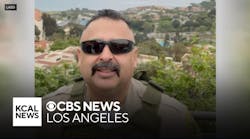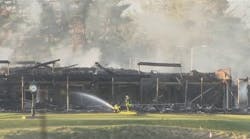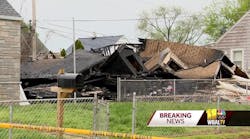Volunteer recruitment and retention was one of several items discussed during a conference hosted by the New Jersey Fire Safety Commission’s Master Planning Advisory Council at Rutgers University. Participants expressed frustration that while the problem seemed almost universal, there were no universal solutions to satisfactorily resolve the problem. After the conference, a small number of attendees agreed to meet again to discuss how they could address this issue. Their original intention of a recruiting plan aimed at the towns within their mutual aid organization (13 towns in northwest Bergen County, NJ) has evolved into a statewide campaign that is being duplicated in at least one other state and could be implemented nationwide.
This small group recognized four critical points:
1. Many residents were not aware that their emergency services are provided by volunteers.2. Where residents knew that these services were performed by volunteers, these residents were not aware that their help was needed in staffing the fire department, ambulance corps or rescue squad.
3. Volunteer departments can be difficult to contact in non-emergency situations. Except during emergencies and training sessions, volunteer fire stations typically are unattended and many don’t even publish a non-emergency telephone number.
4. The youth of the community represent the future, including future volunteers. It is imperative to attract them and provide them with a way to give something back to their towns.
The original concept of the recruitment program focused on bringing new people into volunteer fire companies and departments. This program was expanded to include ambulance corps, first-aid squads, rescue squads, auxiliary police, emergency management and disaster relief workers. After the program got underway, it was expanded and now channels potential members to the U.S. Coast Guard Auxiliary, the state’s Forest Fire Service, the Civil Air Patrol and canine rescue teams.
The program centers on a common theme — that volunteer emergency services people are needed — and a common contact point, a toll-free telephone number, 1-800-FIRE LINE. (Just coming up with a telephone number that conveyed a message and was simple to remember proved to be a daunting task. The number 1-800-FIRE-LINE was chosen after over six months of research and effort.)
As the focus and makeup of the small group of volunteers working on this project grew from a mutual aid organization to a countywide group, then to a regional organization and eventually to the state level, the group realized the need for some structure and the development of working partnerships. Following a presentation to the state’s Fire Safety Commission, this project was assigned as a committee to the commission’s Public Education Advisory Council.
This official standing proved to be invaluable when contacting private-sector interests for their support. However, one drawback that this affiliation presented was the inability to accept monetary contributions to further the recruitment campaign. This was overcome by channeling funding received from private interests through the New Jersey Fire Services Institute, which has federal tax-exempt status as a charitable organization.
Calls made to 1-800-FIRE-LINE go to the State Division of Fire Safety offices. If the call comes in after hours, it is picked up on voicemail. Otherwise, an operator takes the caller’s name and contact information, including area of interest, telephone number, address and where they would like to volunteer. This information is then forwarded to the appropriate volunteer recruitment contact person for the jurisdiction in which the caller would like to volunteer. The caller is then contacted directly to complete the recruitment process.
The need for emergency services volunteers and the telephone number are publicized in a variety of ways. One of the first employed involved the use of placemats at restaurants. One million placemats were printed by Marcal Paper Products and shipped by UPS to over 450 locations in New Jersey that were members of the state’s Licensed Beverage Association and agreed to participate in the program. These services, valued at over $25,000, were all donated, proving that the private sector would support the program.
The committee focused on using a road sign as a more permanent method of promoting the campaign. The state Department of Corrections agreed to develop and manufacture 12-by-18-inch road signs that could be permanently mounted on signposts. The signs, which cost $6.30 each, are purchased by individual fire departments and erected by local public works and road departments. The committee’s goal is to place 3,000 signs statewide.
A major effort undertaken by the committee was the production and distribution of a 10-minute video titled, “What If No One Answered the Call?” The target audience is young people ages 16-22. Copies of the video and a promotional poster were distributed free of charge to each fire department, high school and public library in the state. The distribution of the videos was handled through the Division of Fire Safety, using lists provided by the State Principals and Superintendents Association for the schools and the State Library Association for the public libraries. Information on incorporating the video into a school curriculum was included, based on a pilot program run at one high school. Support for this part of the project came from Prudential Insurance, Hansen Industries and Dr. Frank Field, a TV weather and science reporter.
The committee is already working on other ways of spreading the message on the need for more emergency services volunteers. Projects already in progress include an annual tray liner campaign at fast-food establishments and other restaurants. Public service announcements for both radio and television are also being developed. Transit cards and outdoor advertising are also under consideration.
The 1-800-FIRE-LINE program has been picked up and put into operation in Pennsylvania. Calls in that state are answered by the Pennsylvania Fire Services Institute. Several other states have also expressed interest in adopting the program. The concept and materials are easily transferable to any state.
For further information on the 1-800-FIRE-LINE program, contact Chairman Ed Cohn, Recruitment Committee, New Jersey Division of Fire Safety, CN 809, Trenton, NJ 08625.
Gerard J. Naylis is ex-chief of the Bergenfield, NJ, Fire Department and a member of the New Jersey State Fire Commission.




